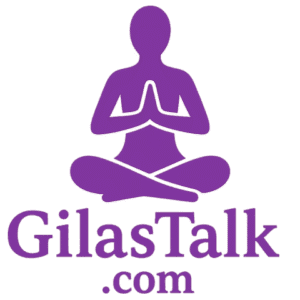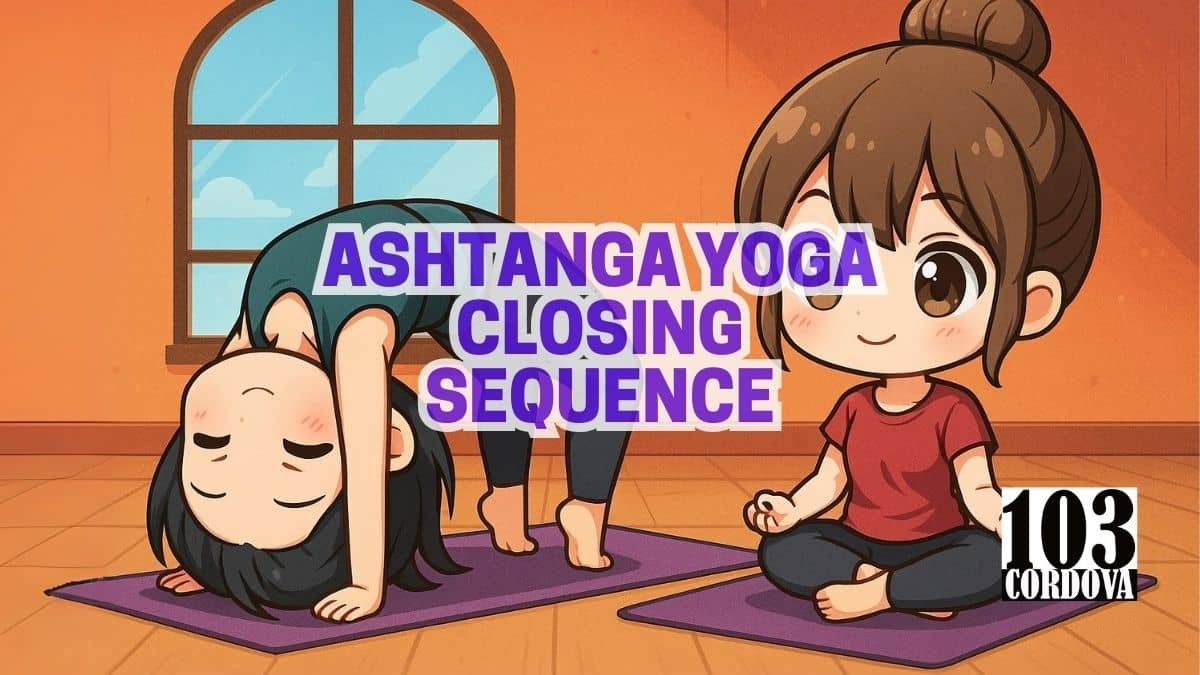The Ashtanga Yoga closing sequence is the final set of poses in a traditional Ashtanga session.
It follows the main sequence, whether Primary, Intermediate, or Advanced.
These final poses are designed to slow down the body and calm the breath.
The sequence brings a steady pace that contrasts with earlier vigorous movements.
This helps the practitioner finish the session feeling grounded and at ease.
1. Definition and Purpose of the Ashtanga Yoga Closing Sequence
The closing sequence in Ashtanga Yoga consists of specific postures done at the end of every practice.
It includes backbends, shoulder stands, headstands, and seated positions.
These poses guide the body into a calm and stable condition.
They also mark a shift from physical effort to mental stillness.
This transition is a key reason the sequence is so important.
🧘 How Does the Ashtanga Yoga Opening Mantra Prepare Your Mind and Body for Practice?
2. Historical Origins and Development
Sri K. Pattabhi Jois developed the Ashtanga Yoga system, including the closing sequence.
He built it on teachings from older yoga texts and his own teacher, Krishnamacharya.
The sequence was passed down in person to maintain accuracy.
It became a set part of the Ashtanga method as it spread globally.
Today, it remains mostly unchanged, preserving the tradition Jois established.
🧘 Why Practicing Advanced Kundalini Yoga Poses Requires Proper Preparation and Mindfulness
3. Consistent Structure and Fixed Postures
The closing sequence uses a set order of poses such as Urdhva Dhanurasana, Sarvangasana, and Padmasana.
Following the same steps each time creates a rhythm the body can rely on.
This helps practitioners notice how they feel from one day to the next.
It also gives a strong sense of order and flow.
Consistency makes the practice easier to remember and more effective.
🧘 How Ashtanga Yoga Online Classes Can Transform Your Daily Practice
4. Calming Effects on the Nervous System
The slow movements and deep breathing in the closing sequence help activate the rest-and-digest response.
This is the opposite of the fight-or-flight reaction that can come from fast-paced exercise.
It calms the nervous system and lowers stress.
Muscles release tension while the mind grows quiet.
Practicing this regularly can support better sleep and focus.
🧘 How Can Ashtanga Yoga Posters Inspire Your Daily Practice?
5. Use of Inversions and Counterposes
Inversions like headstand and shoulder stand are central to this sequence.
These poses increase circulation to the brain and promote balance in the body.
They are followed by counterposes, such as forward folds, to neutralize the spine.
This careful structure helps prevent strain and keeps the body aligned.
Each pose is balanced by another to support physical safety and energy flow.
🧘 How Do Ashtanga Yoga Mantras Enhance Focus and Concentration in Practice?
6. Mental Clarity and Emotional Calm
The closing sequence allows time for stillness and focused breathing.
This helps clear the mind and reduce emotional tension.
The longer holds encourage a quiet state of awareness.
As the physical effort fades, mental noise also begins to quiet.
Many practitioners feel emotionally refreshed after this part of the session.
🧘 Why Tall Yogis Swear by XL Yoga Mats for Optimal Alignment and Comfort
7. Inclusion of Urdhva Dhanurasana (Wheel Pose)
Urdhva Dhanurasana is a strong backbend that appears near the beginning of the closing sequence.
It strengthens the whole body and stretches the front line of the torso.
Although energizing, it prepares the body to transition into calmer poses.
Careful attention to form helps protect the spine and shoulders.
Afterward, more soothing poses guide the body toward rest.
🧘 Can Ashtanga Yoga Books Replace In-Person Learning? Pros and Cons
8. Chanting the Ashtanga Yoga Closing Mantra
Many end the practice with a short mantra to show respect and gratitude.
This chant can be spoken aloud or silently.
It encourages reflection and creates a quiet end to the session.
The words remind practitioners of the spiritual roots of yoga.
Chanting also strengthens focus and intention.
🧘 How Ashtanga Yoga Instructor Training Incorporates Ayurveda and Yogic Philosophy
9. Universal Practice for All Levels
The closing sequence is the same for beginners and advanced students.
This shared structure supports learning and builds routine.
Modifications and props can make poses more accessible.
Even new students can benefit from doing part or all of the sequence.
It gives everyone a stable way to finish their practice.
🧘 Explore the Foundations of Yoga
10. Importance of Learning and Consistent Practice
Knowing the closing sequence helps you feel confident and focused.
Repeating it each time makes the process smoother and more meaningful.
It also builds strong habits that support physical and mental health.
With time, the sequence becomes automatic and calming.
A regular closing helps create a sense of completion in every practice.
🧘 Find a Yoga Studio in Marikina
💡 Conclusion
The closing sequence brings the Ashtanga practice to a thoughtful and peaceful end.
It balances the active and quiet parts of the session.
This makes the practice feel whole and supportive.
Including it every time ensures the body and mind are truly settled.
It’s not just a cooldown—it’s a vital part of the method.
🧘 Our Services
Join our yoga classes for all ages at 103 Cordova Tower, Marquinton Residences, Cirma Street, Sto. Niño, Marikina City.
Our sessions are great for beginners, kids, adults, and seniors—we make sure everyone feels welcome and supported.
You can call us at 09176225780 to learn more or ask questions.
Feel free to reach out through Facebook or get in touch through our website’s contact page.
Come move, breathe, and feel better with us in a friendly and relaxed space.

